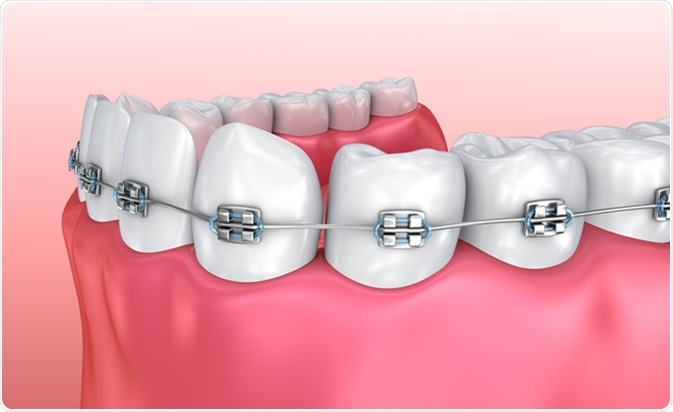Selecting the very best Cumming Orthodontics for Effective Braces and Aligners Solutions
Selecting the very best Cumming Orthodontics for Effective Braces and Aligners Solutions
Blog Article
Comprehensive Overview to Orthodontics Treatments for Correcting Dental Imbalances
In the realm of orthodontics, the journey to accomplishing a flawlessly aligned smile includes a myriad of treatments tailored to fix oral imbalances. From typical braces to unnoticeable aligners and even medical options, the field of orthodontics provides a variety of remedies to attend to varying degrees of dental irregularities. Recognizing the intricacies of each treatment, including their systems, advantages, and potential drawbacks, is vital in making educated choices regarding one's orthodontic therapy. As we browse via the thorough overview to orthodontic treatments for fixing oral imbalances, the detailed information of each technique will certainly unfold, clarifying the path toward a harmonious and useful oral placement.
Orthodontic Procedures Review

Along with traditional braces and clear aligners, orthodontists may likewise recommend various other treatments like headwear, palatal expanders, or retainers to address particular alignment concerns (cumming invisalign). These treatments are customized to every client's distinct needs and might entail a mix of therapies to attain the preferred results. Routine modifications and surveillance are essential components of orthodontic treatment to make certain development is on track and to make any essential modifications in the process. By undertaking orthodontic procedures, patients can not only attain a straighter grin but likewise boost their general dental health and wellness and feature.
Standard Dental Braces: Just How They Work
When taking into consideration orthodontic therapies for oral misalignments, typical braces attract attention as a reliable method for dealing with teeth placing. Typical dental braces include braces, wires, and bands that collaborate to apply continual pressure on the teeth, gradually moving them into the preferred alignment. The brackets are affixed to the teeth making use of an unique adhesive, and the cords are threaded with the brackets. By adjusting the tension of the cables, orthodontists can control the direction and pressure related to each tooth, leading them into appropriate positioning with time.
As pressure is applied to the teeth with the dental braces, the bone bordering the teeth is improved to sustain the new tooth positions. Individuals will certainly need routine changes at the orthodontist's workplace to make sure the dental braces continue to use the proper pressure for reliable teeth movement.
Invisible Aligners: Advantages And Disadvantages
These clear, personalized trays are essentially invisible when used, making them an appealing alternative for individuals seeking an extra visually pleasing orthodontic treatment. Patients can get rid of the aligners before eating or cleaning their teeth, lowering the risk of food obtaining stuck in the home appliance and streamlining the cleansing procedure.

Surgical Orthodontic Options
Surgical treatments in orthodontics present sensible general dental alternatives for resolving complex oral imbalances that might not be successfully solved via traditional orthodontic therapies. While unseen aligners and traditional braces can fix numerous orthodontic problems, specific instances need medical intervention to attain optimal results. Surgical orthodontic alternatives are typically recommended for serious malocclusions, considerable jaw discrepancies, and cases where the underlying bone framework requires adjustment to achieve appropriate positioning.
One typical surgical i was reading this orthodontic treatment is orthognathic surgery, which entails rearranging the jaws to fix functional problems such as difficulty eating or talking. This surgery is commonly performed in cooperation with an orthodontist that aids line up the teeth prior to and after the procedure. Surgical orthodontics might additionally involve treatments to subject impacted teeth, eliminate excess periodontal cells, or reshape the jawbone to produce a more unified face profile.
Before considering medical orthodontic alternatives, individuals go through a detailed assessment to figure out the need and potential advantages of such treatments. cumming orthodontist. While surgical treatment may appear overwhelming, it can considerably boost both the function and looks of the smile in situations where standard orthodontic treatments drop short
Retainers and Post-Treatment Care

Failure to abide with post-treatment treatment guidelines can result in relapse, where the teeth progressively move back towards their original placements. Regular retainer wear, excellent dental health, and normal oral exams are important for preserving the outcomes achieved via orthodontic surgical treatment and making sure the long-lasting security of the fixed dental alignment.
Conclusion
To conclude, orthodontic treatments use numerous options for fixing oral misalignments. Conventional braces utilize metal brackets and cables to move teeth right into proper alignment. Invisible aligners offer an even more discreet alternative however might not appropriate for all instances. Surgical orthodontic alternatives are offered for more severe misalignments. Retainers are commonly utilized post-treatment general dental to keep the brand-new placement. On the whole, orthodontic procedures can efficiently boost dental health and wellness and aesthetic look.
As we navigate via the thorough overview to orthodontic treatments for fixing dental misalignments, the intricate information of each approach will certainly unfold, shedding light on the path towards a functional and harmonious dental placement. - cumming invisalign
One of the most typical orthodontic therapies is the use of dental braces, which are composed of metal braces and cords that use mild pressure to gradually change teeth right into the desired setting.When thinking about orthodontic treatments for oral misalignments, traditional dental braces stand out as a reliable method for remedying teeth placing. Furthermore, undetectable aligners may not be appropriate for complicated orthodontic issues that require even more considerable teeth activity, as they are typically recommended for moderate to modest cases. Retainers are tailor-made orthodontic tools created to hold teeth in their dealt with positions after the completion of orthodontic therapy.
Report this page